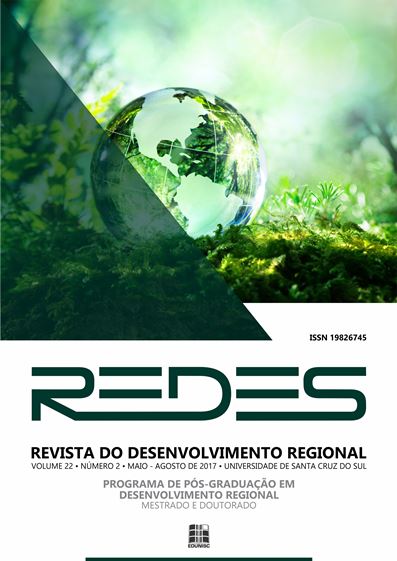Agroecologia e a ética da inovação na agricultura
DOI:
https://doi.org/10.17058/redes.v22i2.9621Palabras clave:
Institucionalidade capitalista. Colonialidade. Modos de vida sustentáveis. Ética enjaulada. Paradigma do Bem Viver.Resumen
A convivência ética entre os seres vivos é impossível no capitalismo. Constituída de um padrão global de poder —Colonialidade— que incide sobre raça, saber, ser, natureza, a institucionalidade capitalista é hostil à ética porque esta contraria práticas —patriarcais, raciais, etnocidas, epistemicidas, ecocidas— que ameaçam de extinção a vida na Terra. Só uma ordem institucional contra hegemônica pode instituir outros modos de vida nos quais a ética é constitutiva da convivência em uma comunidade de vida, como propõe a ciência da Agroecologia. O capitalismo se oculta na ideia de desenvolvimento para devorar mercados cativos, matéria prima abundante, mão de obra barata, mentes obedientes e corpos disciplinados, enquanto viola o humano, o social, o cultural, o ecológico, o espiritual, o ético. Como desenvolvimento = capitalismo, a Agroecologia só fará sua contribuição integral à felicidade dos povos rurais e à sustentabilidade de seus modos de vida no ‘dia depois do desenvolvimento’: quando o paradigma do Bem Viver, com sua ética da inovação, supera a institucionalidade ordenada para o capital por outra orientada para a vida.Descargas
Los datos de descarga aún no están disponibles.
Descargas
Publicado
2017-05-15
Número
Sección
Agroecologia
Licencia
Declaración de Derecho Autoral y Transferencia de Derecho Autoral El autor debe declarar que el artículo es original (no fue publicado previamente), no infrinyendo cualquier derecho autoral o otro derecho de propiedad de terceros. Sometido el artículo, la Revista Redes se reserva el derecho de efectuar, en los originales, alteraciones de orden normativo, ortográfico y gramatical, con vistas a mantener el padrón culto de la lengua, pero respetando, el estilo de los autores. Los trabajos publicados pasan a ser propiedad de la Revista REDES, siendo que, las opiniones emitidas por los autores de los artículos son de responsabilidad de los mismos.Cómo citar
Agroecologia e a ética da inovação na agricultura. (2017). Redes, 22(2), 352-373. https://doi.org/10.17058/redes.v22i2.9621



